Salesforce Managed Services vs. Unmanaged Services: What’s the Difference?

Are you confused about Salesforce managed Services and unmanaged services? This post clearly explains the differences so you can make the best choice for your organization. Salesforce offers both managed and unmanaged services, but what’s the difference? Understanding the distinction between these two options is crucial for organizations looking to optimize their Salesforce experience. In this post, we’ll break down the key differences between managed and unmanaged services so you can make an informed decision for your business. Table of Contents Understanding the Basics of Salesforce Managed Services and Unmanaged Services Benefits of Managed Services Benefits of Unmanaged Services Choosing the Right Option for Your Organization Working with a Partner for Managed Services YOU MIGHT ALSO LIKE Understanding the Basics of Salesforce Managed Services and Unmanaged Services Salesforce managed services refer to a third-party provider who takes on the responsibility of managing and maintaining your Salesforce instance. This includes system updates, security monitoring, and user support. On the other hand, unmanaged services refer to a situation where the organization is responsible for managing and maintaining its own Salesforce instance. The critical difference between the two is the third-party provider’s level of support and responsibility. Benefits of Managed Services There are several benefits to using a managed services provider for your Salesforce instance. First and foremost, it allows your organization to focus on its core competencies rather than spending time and resources on managing and maintaining the platform. Additionally, managed services providers typically have a team of experts who are well-versed and can provide valuable insights and recommendations for optimizing your instance. Finally, managed services providers can offer 24/7 support and monitoring, ensuring that any issues are quickly identified and resolved. Benefits of Unmanaged Services While there are many benefits to using a managed services provider for your Salesforce instance, some organizations may prefer to handle their CRM platform in-house. Unmanaged services allow for greater control and customization of the platform and the ability to make changes and updates on your own schedule. However, it’s important to note that unmanaged services require a higher level of expertise and resources and the responsibility for ensuring the platform is secure and up-to-date. Choosing the Right Option for Your Organization When choosing between managed and unmanaged services for your Salesforce platform, it’s essential to consider your organization’s specific needs and resources. If you have a dedicated IT team with the expertise and resources to manage the platform in-house, unmanaged services may be your best option. However, if you’re looking for a more hands-off approach and want to ensure your platform is secure and up-to-date, managed services may be the better choice. Ultimately, it’s essential to weigh the pros and cons of each option and choose the one that best fits your organization’s needs. Working with a Partner for Managed Services If you decide that managed services are the best option for your organization, it is important to choose a reliable and experienced partner. A good partner will provide ongoing support and maintenance for your platform, ensuring it stays secure and up-to-date. They will also be able to provide guidance and advice on how to optimize your platform for your specific business needs. When choosing a partner, look for one with a proven success track record and a strong industry reputation. Are you looking for a reputed Salesforce partner to experience Managed Services and take your business to the next level? Please schedule a call with CloudVandana to find the best solution for your business. Call Now for more details. Book a call Now Request a Free Consultation YOU MIGHT ALSO LIKE
Accelerate Your Digital Transformation with a ServiceNow Service Provider
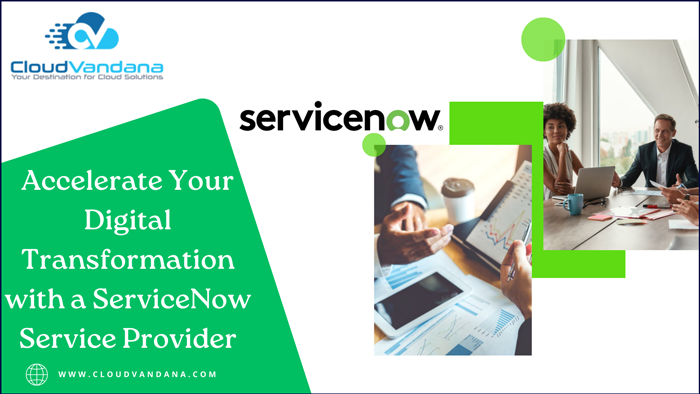
Are you ready to take your business to new heights with a seamless digital transformation? Look no further than a ServiceNow service provider. In today’s fast-paced world, organizations must adapt quickly and efficiently to stay ahead of the competition. That’s where ServiceNow comes in. This powerful platform offers various services and solutions that can revolutionize your business. But to truly maximize its potential, you need a trusted and experienced ServiceNow service provider. With their expertise and guidance, you can easily navigate the complexities of digital transformation, ensuring a recipe for success. From streamlining workflows to automating processes, a ServiceNow service provider will accelerate your digital transformation journey, enabling you to drive innovation, enhance customer experiences, and achieve your business goals. So, are you ready to embrace the future? Let’s dive in and discover how a ServiceNow service provider can unlock the full potential of your organization. What is ServiceNow, and how can it help with digital transformation? ServiceNow is a cloud-based platform that offers a wide range of services and solutions to help organizations streamline their operations and drive digital transformation. It provides a unified framework for managing various aspects of the business, including IT service management, customer service management, human resources, and more. With ServiceNow, organizations can automate manual processes, improve collaboration, and gain real-time insights into their operations. One of the key benefits of ServiceNow is its ability to integrate with existing systems and applications, allowing organizations to leverage their current investments while modernizing their infrastructure. By connecting disparate systems, ServiceNow enables organizations to break down silos and create a single source of truth. This unified approach improves efficiency and enhances visibility and control over business processes. ServiceNow also offers a range of out-of-the-box applications and modules that can be customized to meet specific business needs. Whether you want to streamline IT operations, automate HR processes, or enhance customer service, ServiceNow provides the tools and capabilities to drive digital transformation. Benefits of partnering with a ServiceNow service provider Partnering with a ServiceNow service provider offers numerous benefits for organizations looking to accelerate digital transformation. These providers have deep expertise in implementing and optimizing ServiceNow solutions, ensuring you get the most out of the platform. Here are some key benefits of partnering with a ServiceNow service provider: 1. Expertise and guidance: ServiceNow service providers have extensive knowledge and experience in implementing ServiceNow solutions across various industries. They can provide valuable insights and best practices to help you navigate the complexities of digital transformation. 2. Customization and integration: ServiceNow providers can tailor the platform to your business requirements. They can integrate ServiceNow with your existing systems and applications, ensuring a seamless and efficient digital transformation. 3. Accelerated implementation: ServiceNow service providers have proven methodologies and tools to accelerate implementation. They can help you quickly deploy the platform and realize digital transformation’s benefits. 4. Ongoing support and maintenance: ServiceNow service providers offer ongoing support and maintenance services to ensure the smooth operation of the platform. They can provide training and resources to help employees maximize their productivity and efficiency. Key considerations when choosing a ServiceNow service provider Choosing the right ServiceNow service provider is crucial to the success of your digital transformation journey. Here are some key considerations to keep in mind when selecting a provider: 1. Experience and expertise: Look for a service provider with a proven track record of successful ServiceNow implementations. They should have experience in your industry and a deep understanding of your business needs. 2. References and testimonials: Ask for references and testimonials from past clients to gauge the service provider’s capabilities and customer satisfaction. A reputable service provider will be happy to provide these references. 3. Ability to scale: Ensure the service provider has the capacity and resources to handle your organization’s future growth and expansion. They should be able to support your evolving needs and provide ongoing support and maintenance. 4. Collaboration and communication: Effective collaboration and communication are essential for a successful partnership. Ensure the service provider has a strong communication process and is responsive to your needs and concerns. 5. Cost and value: Consider the cost and value proposition of the service provider. While cost is important, it should not be the sole determining factor. Look for a provider that offers a balance of cost-effectiveness and value. Steps to accelerate your digital transformation with a ServiceNow service provider Now that you understand the benefits of partnering with a ServiceNow service provider and the key considerations in choosing one let’s explore the steps to accelerate your digital transformation journey: 1. Assessment and planning: The first step is to assess your current systems, processes, and workflows thoroughly. Identify areas that need improvement and define your digital transformation goals. Work closely with your ServiceNow service provider to develop a detailed plan and roadmap for implementation. 2. Configuration and customization: Once the plan is in place, your service provider will configure and customize the ServiceNow platform to meet your specific requirements. This may involve integrating existing systems, creating custom workflows, and designing user interfaces. 3. Data migration and integration: If you have existing data in legacy systems, your service provider will assist in migrating the data to the ServiceNow platform. They will also ensure seamless integration with other applications and systems to enable data exchange and process automation. 4. Training and change management: To ensure a smooth transition, your service provider will provide comprehensive training to your employees on how to use the ServiceNow platform. They will also help with change management, ensuring employees embrace the new processes and workflows. 5. Go live and support: Once the platform is configured, customized, and tested, it’s time to go live. Your service provider will assist in the deployment and provide ongoing support and maintenance to ensure the smooth operation of the platform. ServiceNow service provider pricing models ServiceNow service providers offer different pricing models to suit the needs and budgets of organizations. Some common pricing models include: 1. Fixed-price: In a fixed-price model, the service provider charges
5 Best Practices for Effective Customer Relationship Management
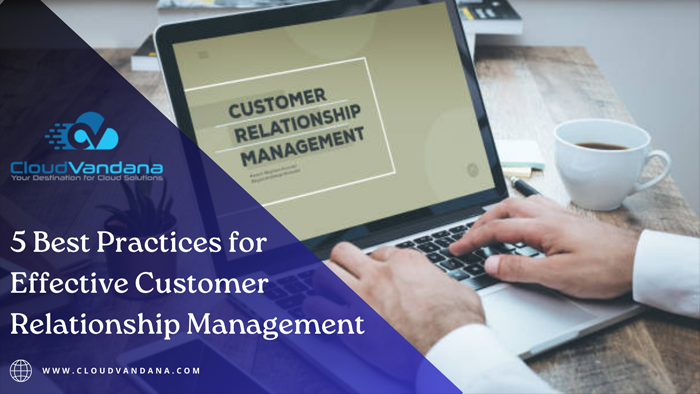
Customer relationship management (CRM) is a strategy that businesses use to manage interactions with customers and potential customers. By implementing effective CRM practices, businesses can improve customer satisfaction, increase customer loyalty, and drive revenue growth. Here are five best practices for effective CRM that can help you enhance your customer relationships. Personalize your interactions with customers One of the most important aspects of effective Customer Relationship Management is personalization. Customers want to feel valued and appreciated, and personalizing your interactions with them can help achieve this. Use their name in communications, remember their preferences and purchase history, and tailor your messaging to their specific needs and interests. This can help build a stronger relationship with your customers and increase their loyalty to your brand. Use technology to streamline communication and data management In today’s digital age, there are many tools and technologies available to help streamline communication and data management for effective Customer Relationship Management. Consider using CRM software that can help you track customer interactions, automate tasks, and provide insights into customer behavior and preferences. You can also use social media and email marketing platforms to communicate with customers and gather feedback. By leveraging technology, you can save time and resources while improving your customer relationships. Respond promptly and proactively to customer feedback One of the most important aspects of effective customer relationship management is responding promptly and proactively to customer feedback. Whether it’s a complaint, a suggestion, or a compliment, responding promptly and thoughtfully shows your customers that you value their input and are committed to providing excellent service. Acknowledge their feedback, address any concerns or issues, and thank them for their business. This can help build trust and loyalty with your customers, leading to increased sales and revenue. Offer incentives and rewards for loyalty Offering incentives and rewards for customer loyalty is a great way to keep your customers happy and coming back for more. This can include discounts, free products or services, exclusive access to events or promotions, or even personalized gifts or experiences. By showing your customers that you appreciate their business and are willing to go the extra mile to satisfy them, you can build strong and lasting relationships that will benefit your business in the long run. Just make sure to tailor your rewards and incentives to your customers’ needs and preferences and to communicate them clearly and effectively to maximize their impact. Continuously analyze and improve your CRM strategy Effective customer relationship management requires continuous analysis and improvement of your strategy. This means regularly reviewing your customer data and feedback to identify areas for improvement and adjusting your approach accordingly. It also means staying up-to-date with industry trends and best practices and being willing to experiment with new strategies and technologies to serve your customers better. By constantly striving to improve your CRM strategy, you can ensure that your customers remain satisfied and loyal and that your business continues to thrive. Are you seeking the world’s #1 CRM solution for enhanced organizational processes and more satisfied customers? Please schedule a consultation call with CloudVandana and get the solution tailored to your business. Call Now. Request a Free Consultation YOU MIGHT ALSO LIKE
Transforming IT Service Management with ServiceNow: How to Streamline Operations
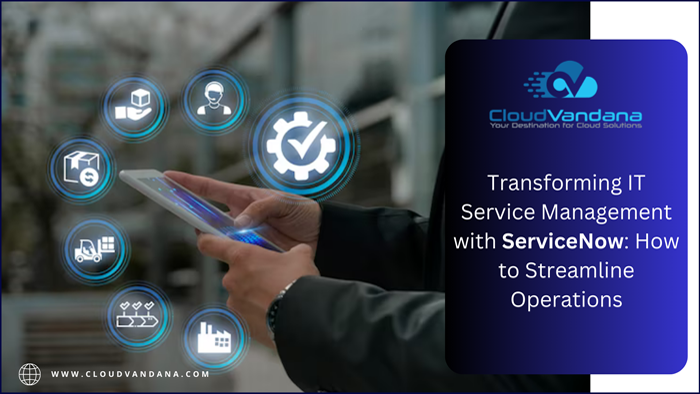
Discover how to revolutionize your IT Service Management with ServiceNow. Learn essential strategies to streamline operations, improve efficiency, and enhance customer satisfaction. Table of Contents IT Service Management with ServiceNow Understanding ServiceNow and its role in streamlining IT operations Key features and benefits of ServiceNow for ITSM Steps to implement ServiceNow for ITSM in your organization Best practices for optimizing IT service delivery using ServiceNow Integrating ServiceNow with other IT tools and systems Common challenges and how to overcome them during the implementation process Conclusion: The future of ITSM with ServiceNow YOU MIGHT ALSO LIKE IT Service Management with ServiceNow ServiceNow is the leading cloud-based platform revolutionizing how organizations manage their IT services. With its powerful capabilities and intuitive interface, ServiceNow enables businesses to automate and optimize their ITSM processes, ultimately transforming their operations. This article will explore the key benefits of implementing ServiceNow in your organization and how it can help streamline your IT operations. From incident management to change management and beyond, ServiceNow offers a comprehensive suite of tools that can drive efficiency, improve service quality, and deliver exceptional customer experiences. So, if you’re ready to take your ITSM to the next level and unlock the full potential of your IT department, keep reading to discover how ServiceNow can revolutionize your business. Understanding ServiceNow and its role in streamlining IT operations ServiceNow is a powerful cloud-based platform that offers a comprehensive suite of tools for IT Service Management (ITSM). It allows organizations to automate and optimize their IT processes, ultimately transforming their operations. With ServiceNow, businesses can streamline their IT operations, improve service quality, and deliver exceptional customer experiences. ServiceNow offers many functionalities, including incident management, change management, problem management, and asset management. These tools enable organizations to efficiently handle IT incidents, track and manage changes, and ensure the smooth functioning of critical IT systems. By centralizing ITSM processes and providing a single source of truth, ServiceNow eliminates silos and improves collaboration across different departments. Key features and benefits of ServiceNow for ITSM ServiceNow offers many features and benefits, making it an ideal choice for organizations looking to streamline their ITSM operations. Here are some of the key features and benefits: 1. Automation and Orchestration: ServiceNow enables organizations to automate routine IT tasks and processes, reducing manual effort and improving operational efficiency. It allows for the seamless orchestration of workflows, ensuring that tasks are completed promptly and efficiently. 2. Self-Service Portal: With ServiceNow, organizations can empower their users to resolve IT issues on their own through a self-service portal. This reduces the burden on IT staff and provides users with a faster and more convenient way to get the support they need. 3. Incident Management: ServiceNow provides a robust system that allows organizations to efficiently track, manage, and resolve IT incidents. It enables IT teams to prioritize incidents based on their impact and urgency, promptly addressing critical issues. 4. Change Management: ServiceNow’s change management functionality helps organizations manage the entire change lifecycle, from planning and assessment to implementation and review. It provides a standardized and controlled process for managing changes, reducing the risk of disruptions, and ensuring the smooth rollout of new services. 5. Service Catalog: ServiceNow’s service catalog allows organizations to define and manage their users’ services. It provides a user-friendly interface where users can easily browse and request services, streamlining the service delivery process. 6. Reporting and Analytics: ServiceNow offers powerful reporting and analytics capabilities that provide organizations with valuable insights into their ITSM operations. It allows IT teams to track key performance indicators (KPIs), identify trends, and make data-driven decisions to improve service delivery continuously. Steps to implement ServiceNow for ITSM in your organization Implementing ServiceNow for ITSM in your organization requires careful planning and execution. Here are the steps involved: 1. Assess your current IT processes: Before implementing ServiceNow, it’s essential to assess your current IT processes and identify areas that need improvement. This will help you determine which ServiceNow modules and functionalities are most relevant to your organization. 2. Define your requirements: Once you have assessed your current processes, define your requirements for ServiceNow. Identify the specific functionalities and features you need to streamline your IT operations and improve service delivery. 3. Configure ServiceNow: Configure ServiceNow according to your requirements. This includes setting up the various modules, workflows, and service catalog items. Ensure that you customize ServiceNow to align with your organization’s unique needs and processes. 4. Import data: If you have existing data in your legacy systems, you will need to import it into ServiceNow. This may include user data, asset data, or any other relevant information. Ensure that the data is clean, accurate, and properly mapped to the corresponding fields in ServiceNow. 5. Test and validate: Before rolling out ServiceNow to your entire organization, thoroughly test and validate the system. This includes testing various scenarios, workflows, and integrations to ensure that everything is working as expected. 6. Train your users: Once ServiceNow is implemented and validated, provide comprehensive training to your users. This will help them familiarize themselves with the platform and its functionalities, ensuring a smooth transition and adoption. Best practices for optimizing IT service delivery using ServiceNow To maximize the benefits of ServiceNow and optimize your IT service delivery, consider the following best practices: 1. Standardize and automate processes: Take advantage of ServiceNow’s automation capabilities to standardize and automate your IT processes. This will help reduce manual effort, minimize errors, and improve process efficiency. 2. Continuously monitor and improve: Leverage ServiceNow’s reporting and analytics capabilities to monitor key metrics and identify areas for improvement. Regularly analyze data and feedback to identify bottlenecks, inefficiencies, and opportunities for optimization. 3. Promote self-service: Encourage your users to leverage the self-service portal for resolving IT issues. Provide clear and easily accessible documentation, FAQs, and knowledge articles to empower users to find answers on their own. 4. Collaborate across departments: ServiceNow’s integrated platform allows for seamless collaboration across different departments. Encourage cross-functional teams to work together and leverage ServiceNow’s collaboration tools to improve
Step-by-Step: Listing Your App on Salesforce AppExchange
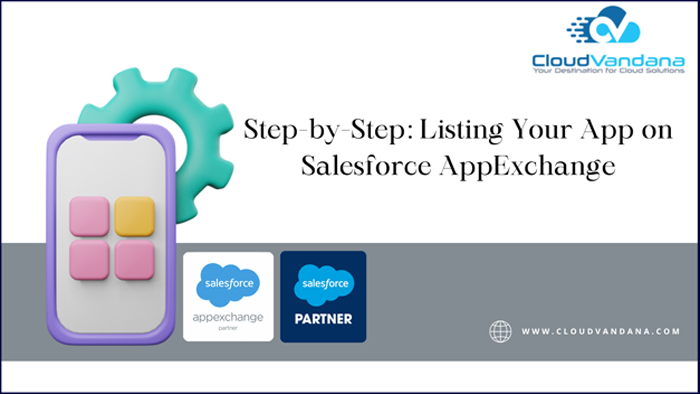
Listing your app on Salesforce AppExchange doesn’t have to be complicated. This guide breaks down the process into easy-to-follow steps to get your app in front of millions of potential customers. If you have developed an app and want to reach a wider audience, listing it on Salesforce AppExchange is a great option. This guide will walk you through listing your app on AppExchange, ensuring it is visible to millions of potential customers. Understand the AppExchange Listing Requirements Before listing your app on Salesforce AppExchange, it’s important to understand the listing requirements. Salesforce has specific guidelines and criteria that your app must meet in order to be listed. These requirements include having a clear and concise app description, providing screenshots and videos of your app in action, and ensuring that your app is compatible with Salesforce’s platform. By familiarizing yourself with these requirements, you can ensure that your app meets all the necessary criteria and has the best chance of being approved for listing on AppExchange. Prepare Your App for Listing Before you can list your app on Salesforce AppExchange, you need to make sure it is prepared and meets all the necessary requirements. Start by reviewing Salesforce’s guidelines and criteria for listing. This includes having a clear and concise app description that accurately represents your app’s features and benefits. You should also provide screenshots and videos that showcase your app in action, giving potential customers a visual understanding of what your app can do. Additionally, ensure that your app is compatible with Salesforce’s platform and follows any technical requirements outlined by Salesforce. By thoroughly preparing your app for listing, you increase your chances of getting approved and reaching millions of potential customers on AppExchange. Create a Salesforce Developer Account The first step in listing your app on Salesforce AppExchange is to create a Salesforce Developer Account. This account will give you access to the tools and resources you need to develop and manage your app. To create an account, simply visit the Salesforce Developer website and click on the “Sign Up” button. Fill out the required information, including your name, email address, and password. Once you have created your account, you can start exploring the Salesforce Developer platform and familiarize yourself with the tools and features available to you. Complete the Security Review Process After creating your Salesforce Developer Account and developing your app, the next step in listing your app on Salesforce AppExchange is to complete the security review process. This process ensures that your app meets Salesforce’s security standards and protects customer data. To begin the security review, navigate to the Security Review tab in your Salesforce Developer Account. Here, you will find detailed information on the security requirements and guidelines. It is important to thoroughly review these requirements and update your app to ensure compliance. Once you are confident that your app meets the security standards, you can submit it for review. Salesforce will then thoroughly evaluate your app’s security measures and provide feedback or request additional information if needed. Once your app successfully passes the security review, it will be listed on Salesforce AppExchange, giving you access to millions of potential customers. Submit Your App for Listing Once you have completed the security review process and made any necessary updates to your app, it’s time to submit it for listing on Salesforce AppExchange. To do this, navigate to the AppExchange Publishing Console in your Salesforce Developer Account. Here, you will find the option to submit your app for listing. Click on the submit button and follow the prompts to provide all the required information about your app, including its name, description, and category. You must also upload any necessary documentation, such as user guides or installation instructions. Once you have submitted your app, Salesforce will review it to ensure it meets all the necessary criteria for listing. This review process may take some time, so be patient. If your app meets all the requirements, it will be listed on Salesforce AppExchange, allowing you to reach millions of potential customers. Have you checked the new AppExchange App by CloudVandana? Please check CV Files or schedule a call with our experts and get the solution best suited for your business. Call Now. Request a Free Consultation YOU MIGHT ALSO LIKE
Building a Team of Developers at Your Offshore Development Center

Offshore development center provides businesses an efficient and cost-effective way to access high-quality software development services. Learn how to attract and manage offshore developers, how to find the right team or individual for your project, and the challenges you may face along the way. Offshore Development Center Define Your Business Needs and Objectives Before starting the recruitment process, defining your project’s business needs and objectives is important. When looking for an effective offshore development team, you must consider budget, timeline, project scale, technical requirements, desired outcomes, and more. This will help you focus your search on developers that meet these specific requirements rather than spending time trying to solicit services from unsuitable companies. Invest in the Right Talent To bring your offshore development project up to speed, investing in the right talent is important. Your developers must have the skills and knowledge necessary for successful software development, so research their past projects and find out what differentiates them from other firms. When hiring an external developer, check that the candidate has a portfolio of successfully completed projects, a proven track record of delivering high-quality work on time, and a willingness to work together as part of an offshore team. Recruit through Reliable Sources When recruiting developers for your offshore Development Center, rely on trusted recruiting sources such as coding competition websites, job boards, and professional networks. Competitions are a great way to find candidates with the right skill set and potential, so check out relevant competitions in your area or reach out to software firms that host them. Additionally, attending hackathons or offering remote testing opportunities can be extremely beneficial in finding top-notch talent for your development team. Offer Competitive Salaries and Benefits One way to ensure you find the right people for your offshore development Center is to offer competitive salaries and benefits. Take the time to research current job market rates and make sure your compensation packages are on par with industry standards. Also, consider providing additional benefits such as health insurance, flexible working arrangements, performance incentives, and more! This will show potential candidates that you value them and make it easier to attract the right talent. Provide Clear Job Descriptions and Expectations Job descriptions are an important tool for attracting the right candidate, but they’re also incredibly useful when it comes to hiring and managing your offshore development team. A clear job description will help potential candidates understand their role and how it fits into the project or product. It should also set out expectations in terms of responsibilities, deadlines, and deliverables so everyone is on the same page from the outset. Are you looking for an expert team of remote developers to maintain the skill gap in your organization and enhance your process? Please feel free to schedule a call with CloudVandana and hire the best team of developers from the huge talent pool best suited to your business. Call Now. Request a Free Consultation YOU MIGHT ALSO LIKE
Maximizing Sales Productivity with Salesforce Inbox
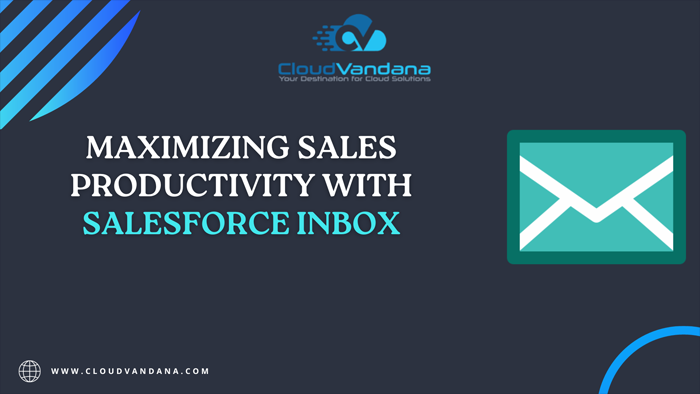
Salesforce Inbox is a valuable tool for sales professionals looking to enhance their productivity. By seamlessly integrating with your email, calendar, and CRM, Salesforce Inbox helps you stay organized and focused on closing deals. With features like email tracking, meeting scheduling, and contact management, this powerful tool streamlines your workflow and allows you to prioritize your sales activities effectively. Say goodbye to scattered information and hello to increased efficiency with Salesforce Inbox. Streamline your email workflow With Salesforce Inbox, you can streamline your email workflow and stay organized like never before. This powerful tool integrates seamlessly with your email, allowing you to manage all your messages in one place. You can easily track emails, set reminders, and prioritize your inbox based on the most important messages. Say goodbye to the days of searching through a cluttered inbox and hello to a streamlined and efficient email workflow with Inbox. Schedule and manage appointments efficiently One of the key features of Inbox is its ability to integrate with your calendar. With this tool, you can easily schedule and manage appointments without having to switch between different platforms. You can view your calendar directly within your email interface, making it easy to see your availability and schedule meetings with clients or colleagues. Additionally, you can set reminders for upcoming appointments and receive notifications to ensure you never miss an important meeting. With Inbox, you can maximize your sales productivity by efficiently managing your appointments and staying organized. Access and update CRM data directly from your inbox Another valuable feature of Inbox is its seamless integration with your CRM system. This means that you can access and update customer data directly from your inbox without having to switch between different platforms. Whether you need to update a contact’s information, add notes to a customer’s profile, or track the progress of a deal, you can do it all within your email interface. This not only saves you time and effort, but it also ensures that your CRM data is always up to date and accurate. With Salesforce Inbox, you can streamline your sales process and make informed decisions based on real-time customer information. Utilize email templates and tracking features One of the key features of Salesforce Inbox is its ability to create and use email templates. These templates can be customized to fit your specific sales process and save you significant time when sending out repetitive emails. Instead of repeating the same message repeatedly, you can simply select a template and personalize it as needed. In addition to email templates, Salesforce Inbox also offers tracking features. This lets you see when a recipient opens your email, clicks on links, or downloads any attachments. By tracking these interactions, you can gain valuable insights into the effectiveness of your emails and make adjustments to improve your sales strategy. You can maximize your sales productivity with Salesforce Inbox by utilizing email templates and tracking features. You can save time on repetitive tasks and gain valuable insights into your email performance, allowing you to focus on closing deals and driving revenue. Stay connected and productive on the go with mobile capabilities Salesforce Inbox offers mobile capabilities that allow you to stay connected and productive even on the go. With the mobile app, you can access your emails, calendar, and CRM from your smartphone or tablet, allowing you to work from anywhere. Whether traveling for a sales meeting, attending a conference, or simply out of the office, you can stay on top of your sales activities and respond to important emails in real-time. The mobile app also syncs with your desktop version, ensuring you can access the most up-to-date information and seamlessly transition between devices. In addition to accessing your emails and calendar, the mobile app also allows you to view and update your CRM records. This means that you can quickly update contact information, add notes from a meeting, or create new opportunities, all from your mobile device. Utilizing the mobile capabilities of Salesforce Inbox allows you to stay connected and productive no matter where you are. This flexibility and convenience can help you stay on top of your sales activities and close deals faster, ultimately driving revenue for your business. You can also maximize your sales productivity with the help of this #1 CRM platform. Please schedule a consultation call with CloudVandana, a reputed Staff Augmentation firm in India, and experience a faster development process with the expert team of remote developers. Call Now. Request a Free Consultation YOU MIGHT ALSO LIKE
The Ultimate Guide to Using the Schema Builder in Salesforce
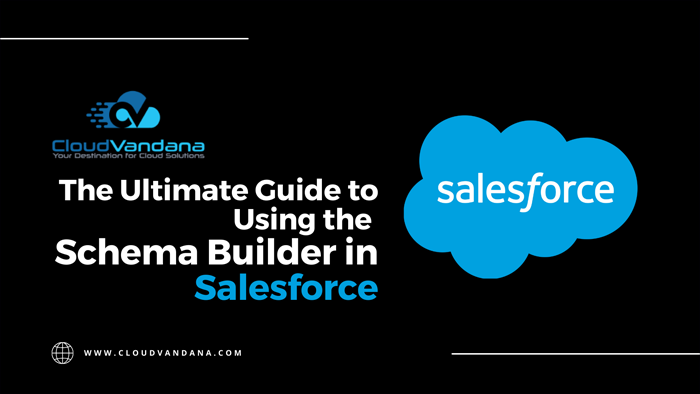
Schema Builder in Salesforce is a powerful tool that allows users to design and manage their data models visually and intuitively. This comprehensive guide will walk you through the various features and functionalities of Schema Builder, including how to create custom objects, define relationships between objects, and optimize performance for your Salesforce org. Whether you’re a beginner or an experienced Salesforce user, this resource will help you unlock the full potential of Schema Builder and streamline your data management processes. Introduction to Schema Builder in Salesforce Schema Builder is a powerful tool within Salesforce that allows users to design and manage their data models in a visual and intuitive way. With Schema Builder, you can easily create custom objects, define relationships between objects, and optimize performance for your Salesforce org. Whether you’re a beginner or an experienced Salesforce user, this guide will provide you with an introduction to Schema Builder and help you streamline your data management processes. Understanding the basics of data modeling Data modeling is a crucial aspect of managing your data effectively in Salesforce. It involves designing the structure and relationships of your data to ensure it is organized and accessible. In Schema Builder, you can create custom objects to represent different entities in your organization, such as customers, products, or orders. You can then define fields within these objects to capture specific information. Additionally, you can establish relationships between objects, such as a one-to-many relationship between a customer and their orders. By understanding the basics of data modeling, you can optimize your data management processes and make the most out of Schema Builder in Salesforce. Designing complex data models using Schema Builder Schema Builder in Salesforce provides a powerful tool for designing complex data models. With this feature, you can create custom objects and define their fields to capture specific information. This allows you to organize your data effectively and establish relationships between different entities. For example, you can create a one-to-many relationship between a customer and their orders or a many-to-many relationship between products and categories. By utilizing Schema Builder, you can optimize your data management processes and ensure that your Salesforce instance is tailored to your organization’s unique needs. This ultimate guide will walk you through the steps of designing complex data models using Schema Builder, helping you unlock the full potential of this valuable tool. Best practices for optimizing performance When using Schema Builder in Salesforce, it’s important to follow best practices to optimize performance. One key tip is to limit the number of fields on your custom objects. Having too many fields can slow down your system and make it difficult to navigate and manage your data. Instead, focus on creating only the necessary fields that you need for your specific business processes. Additionally, consider using formula fields or roll-up summary fields to calculate and display data rather than storing it in individual fields. This can help reduce the overall number of fields and improve performance. Lastly, regularly review and clean up your data to remove any unnecessary or outdated information. This can help keep your system running smoothly and ensure that you’re only working with relevant and accurate data. By following these best practices, you can optimize the performance of your Salesforce instance and make the most of the Schema Builder tool. Advanced tips and tricks for maximizing the use of Schema Builder Once you have mastered the basics of using Schema Builder in Salesforce, it’s time to take your skills to the next level with some advanced tips and tricks. These strategies will help you maximize the use of Schema Builder and optimize your data models for even better performance. One advanced technique is to leverage the power of relationships between objects. By creating lookup or master-detail relationships, you can establish connections between different objects and easily access related data. This can streamline your processes and make it easier to navigate and analyze your data. Another tip is to take advantage of custom indexes. By creating custom indexes on frequently queried fields, you can improve the speed and efficiency of your queries. This can be especially useful for large datasets or complex queries that involve multiple objects. Additionally, consider using validation rules and triggers to enforce data integrity and automate certain actions. Validation rules ensure that data entered into your system meets specific criteria, while triggers can automatically perform actions based on certain conditions or events. These features can save you time and effort by reducing the need for manual data validation and processing. Lastly, don’t forget to review and optimize your data models regularly. As your business evolves and grows, your data requirements may change. Take the time to assess your existing data models and make any necessary adjustments to ensure they continue to meet your needs. By implementing these advanced tips and tricks, you can take full advantage of the capabilities of Schema Builder in Salesforce and optimize your data models for maximum performance and efficiency. Do you want to know more about Salesforce schema builder or plan to implement Salesforce CRM in your workforce? Your trusted Salesforce partner can assist you with the best solution that is best suited to your business. Call our experts and get a free consultation. Call Now. Request a Free Consultation YOU MIGHT ALSO LIKE
How to Streamline Your Migration to Salesforce Processes
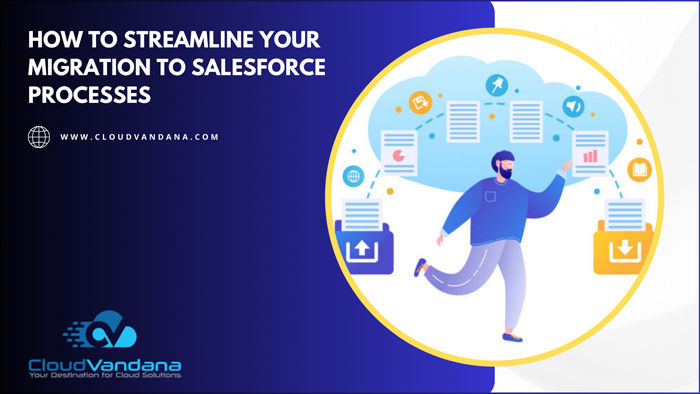
Migration to Salesforce can be a complex process for your business data, but it doesn’t have to be. With this comprehensive guide, you’ll learn how to make the migration process quick and painless! From planning and prepping to executing the flow, this post contains step-by-step instructions for a successful migration to Salesforce. Migration to Salesforce Processes Research Before the Implementation Before you start the migration, it’s important to research the existing data and how it will fit into the new Salesforce system. Run reports to look for patterns, inconsistencies, and volume of data. Analyze what would fit best in which Salesforce object, organize the records, and ensure any manual input is consistent. Also, make sure to understand how new apps could benefit your business process as well as any local legislation that regulates data entry. Outline Your System Requirements To ensure the migration is efficient and successful, it’s essential to define the system requirements. This includes making sure there are no technical dependencies and limitations, understanding how many data types need to be migrated, and what fields need to be transferred. Also, develop a comprehensive system architecture document detailing information on storage rates, user roles, API limits, and reporting structure. Then, create a test plan to review the accuracy of migrated data before finally launching it into production. Understand Your Data Sources and Migration Tools Once you outline your requirements, it’s time to understand what data sources exist and the migration tools available for the seamless transition. Identify all sources of data- whether that’s from internal databases, SaaS systems, or external third-party vendors. Then, identify the Salesforce-provided tools such as Data Loader, Workbench, and AppExchange applications to determine which will be required during the migration. Finally, assess your current architecture to make sure all resources needed are present; this enables you to understand any extra costs associated with the migration process. Develop a Detailed Migration Plan To ensure that your migration achieves all your business objectives, you should create a detailed execution plan. This includes planning the timeline of the project, assigning responsibility to team members, and understanding potential issues and dependencies. As part of this process, document the source data in detail- including the structure, content, and layout -so you can analyze it thoroughly to identify any discrepancies between legacy systems and Salesforce processes. Analyze the Data Post- Migration and Identify Any Issues After you have completed the migration, it’s important to review and analyze the data post-migration. This is to help ensure that the data has been migrated correctly and you can identify and troubleshoot any potential issues that may have arisen during the process. To ensure that all data is accurate and complete, use analytical techniques like cross-checking the original source system with Salesforce records. Taking extra time to analyze post-migration will greatly improve your chances of a successful migration process! Are you planning to migrate your business processes to Salesforce and stay one step ahead of the competition? Please feel free to schedule a call with the Salesforce experts of CloudVandana and take your business to the next level. Call Now. Request a Free Consultation YOU MIGHT ALSO LIKE
A Simple Guide to Picking the Best Salesforce Service Provider

Are you looking for a Salesforce service provider to help you streamline your business processes? Finding the right one can be tricky, with so many companies offering different services and features. In this guide, CloudVandana will examine the key factors to consider when choosing a Salesforce service provider to ensure you find the best fit quickly. Table of Contents Research Different Providers Check Support Services and Customer Reviews Analyze the Features Offered Compare Cost Structures Assess Security Policies YOU MIGHT ALSO LIKE Research Different Providers Once you have identified the Salesforce-related services you need, it’s time to start researching potential providers. Check out their websites, look at customer reviews and reviews on other platforms, and check out comparative analysis reports to get a better overall picture of each provider. Make sure that the provider you choose has a strong track record of helping businesses like yours achieve their goals. Check Support Services and Customer Reviews While checking the track record of each provider, make sure that you assess their support services, as well. Consider what types of customer service the provider offers and if they fit your needs. Customer reviews can also be incredibly helpful in making your decision – look for any patterns of customer satisfaction or dissatisfaction when evaluating providers. Analyze the Features Offered Take the time to compare different Salesforce service providers to take advantage of software-specific features. Look out for custom add-ons that can help enhance your team’s performance and ensure that your user interface (UI) is intuitive and sales-centric. Does the provider offer technical assistance? Does their system integrate with other tools you will need? Analyzing the features of each provider can give you a clear picture of which works best for you. Compare Cost Structures Every provider will have different features, user interfaces, and cost structures, so it’s important to compare them before selecting one. Cost is typically based on either a flat fee or a pay-as-you-go model, depending on the number of users. Make sure to factor in any setup fees, training, and support services, as these can be additional costs. Don’t forget to factor in any long-term contracts or discounts you may get from special offers or discounts available at certain times of the year. Assess Security Policies Security must be one of the top priorities when picking a Salesforce service provider. Ensure the company’s security policies meet industry standards, as you don’t want your data to be at risk. Look for third-party certifications like ISO 27001 or SOC 2 that show they have taken steps to protect customer information. Pay special attention to compliance with GDPR if your data is subject to GDPR. Lastly, ensure their system architecture meets all compliance guidelines that Salesforce sets. Are you looking for a reputed Salesforce Service provider to enhance your organization and stay ahead of your competitors? Please feel free to contact us and stay ahead of the competition. Call Now. Schedule A Call Request a Free Consultation YOU MIGHT ALSO LIKE






